Lithium batteries have quickly won over consumers looking to complement their solar array with an energy storage system. BYD is to the battery sector what Samsung is to mobile phones: the market leader. Its products can be seen everywhere. Your mobile phone may have a BYD battery. The electric bus you took to work may have a battery made by BYD. In this article, we discuss this company and its most outstanding photovoltaic products
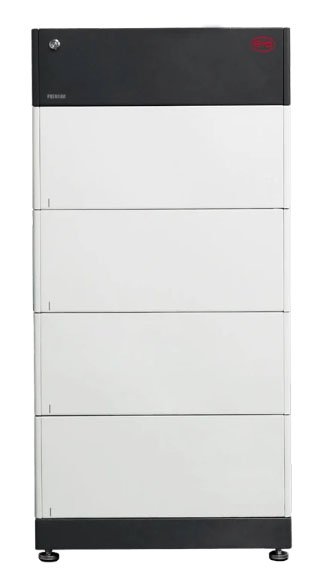
About BYD Company
BYD was founded in China in November 1994, to create innovative technology that contributes to improving people’s lives. The company has more than 30 industrial parks strategically distributed across six continents. On the other hand, it is listed on the Hong Kong and Shenzhen Stock Exchanges.
But BYD does not only manufacture batteries for solar installations. It is a widely known brand in the world of electric transport. Also, they manufacture other electronic products and invest in new energy industries and rail transport. For example, in 2000, the company became the world’s largest manufacturer of mobile phone batteries. And in 2003, they bought a Chinese car factory, making BYD a true commercial giant.
This diversified activity makes BYD a consolidated and reliable company committed to quality. This company demonstrated its versatility during the global pandemic by becoming the first mass producer of masks. It manufactured over 5 million daily, along with 300,000 bottles of disinfectant.
BYD’s Commitment to Zero-Emission Energy Solutions
It is important to mention that BYD operates throughout the entire industrial chain. That is, it not only manufactures the batteries but also controls the development of the mineral resources necessary for their manufacture. Its commitment to research and development has allowed it to achieve excellent design and encapsulation capacity. It also has a large-scale automatic production line that places it among the international leaders.
BYD offers a comprehensive solution with zero emissions, thanks to renewable energy. It includes high voltage (HV) and low voltage (LV) storage equipment. The option to choose will depend on the inverter you want to work with. HV inverters are compatible with “small” inverters that work on the grid and do not allow you to reach large storage capacities (over 100kWh). So, they are usually aimed at residential or commercial applications connected to the grid.
LV systems are more flexible and compatible with larger, parallelizable inverters, making them ideal for large-scale installations (up to 1MWh). However, they are less efficient and more expensive to install than HV systems because of factors like increased wiring requirements.
Let’s now see what each model consists of.
What do BYD high-voltage batteries offer?
The BYD Battery-Box Premium for high voltage is offered in two models: HVS and HVM. Both have a similar design. From an aesthetic point of view, they only differ at first glance in that the HVS has a stripe on one side of the module and the HVM has two. The structure of both is made up of three parts: the base, the modules and the BCU or control unit.
They also share the following characteristics:

What differentiates the HVS and HVM models of BYD Batteries?
The main difference is the working voltage. The modules of the BYD HVS batteries are 100 volts, with a minimum of two modules per tower (200v), and can reach five (500v). Meanwhile, the modules of the BYD HVM batteries are 50v, with a minimum of three modules (150v) and can reach eight modules in series (450v).
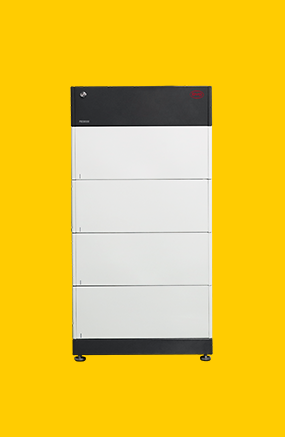
KEY INFO
Why is voltage important? On the one hand, this will determine compatibility with the inverters. On the other hand, it determines the battery charge and discharge power, which is based on the inverter’s DC output current and the battery voltage.
So, if your installation is small, your option would be the HVS model. But if your installation exceeds 14-15 kWh, it is better to work with HVM. This is because, with a higher voltage, you will be able to work with more power, regardless of the inverter current.
Now let’s look at the rest of the features of each high voltage model.
BYD HVS model
Each tower of the BYD Battery-Box Premium HVS can be composed, as we said, of a minimum of 2 HVS modules, and can reach up to 5. These are connected in series to offer a useful capacity range of 5.1 kWh to 12.8 kWh.
It is a fully scalable system, which allows you to increase it as your energy needs grow. Depending on the inverter used, up to 3 towers of 5 modules (HVS) can be installed in parallel. This will allow you to reach a useful capacity of 38.4 kWh. It is important to remember that to install towers in parallel, they must all have the same voltage, that is, with the same number of modules each.
KEY INFO
Remember, you cannot mix HVS and HVM modules.
We summarise the basic characteristics of this model in the following table:
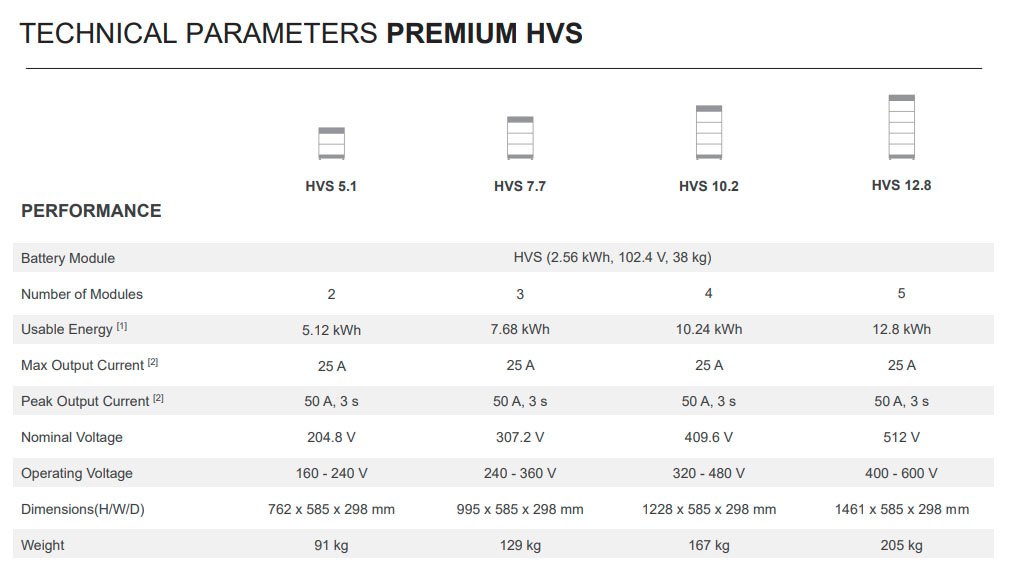
BYD HVM models
For its part, the BYD Battery-Box Premium HVM can be composed of a minimum of 3 and up to 8 HVM modules connected in series in a tower. In this way, it offers a useful capacity range of 8.3 kWh to 22.1 kWh.
Again, depending on the inverter you decide to install, you can put up to 3 towers of 8 HVM modules in parallel. This scalability will allow you to reach 66.3 kWh.
The technical characteristics of the BYD HVM battery model are as follows:
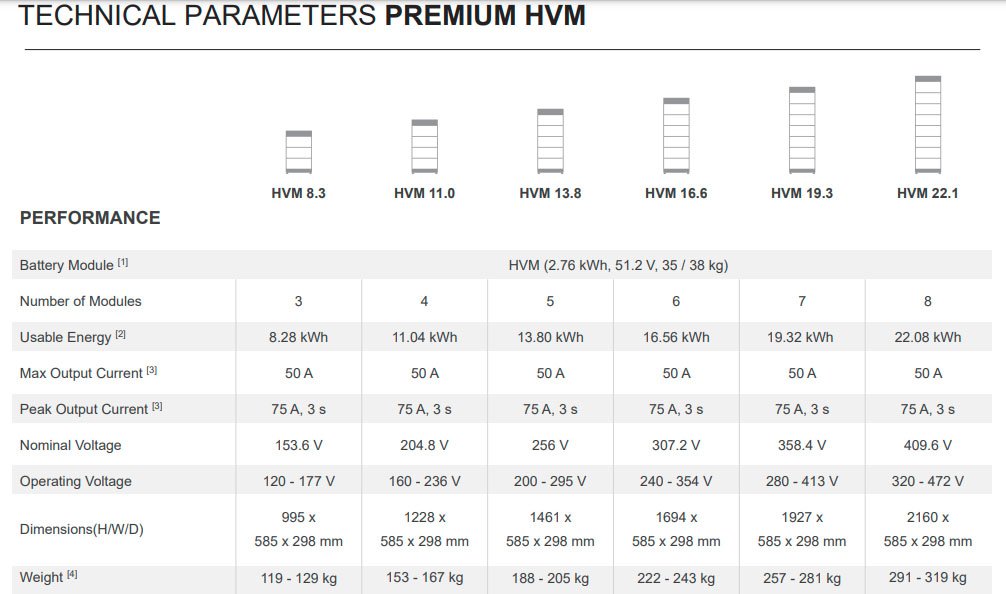
BYD Low Voltage Models
Having seen the high-voltage models, let’s see what BYD offers about low-voltage batteries. Specifically, BYD has two low-voltage models: the LVL and the LVS. Let’s see what possibilities each one has.
BYD LVL battery

Like the HVS and HVM models, the BYD Battery-Box Premium LVL is a lithium iron phosphate (LFP) battery. The battery is made up of 2 modules: the one corresponding to the BCU or battery control unit and the accumulator itself.
The useful capacity of the LVL reaches 15.36kWh. Like the HV models, the LVL can also be scaled, being able to connect up to 64 storage systems in parallel. This means that you can reach 983 kWh.

Both this model and the LVS are designed to work with 48V systems. We summarise the technical characteristics of the LVL model in the following table.

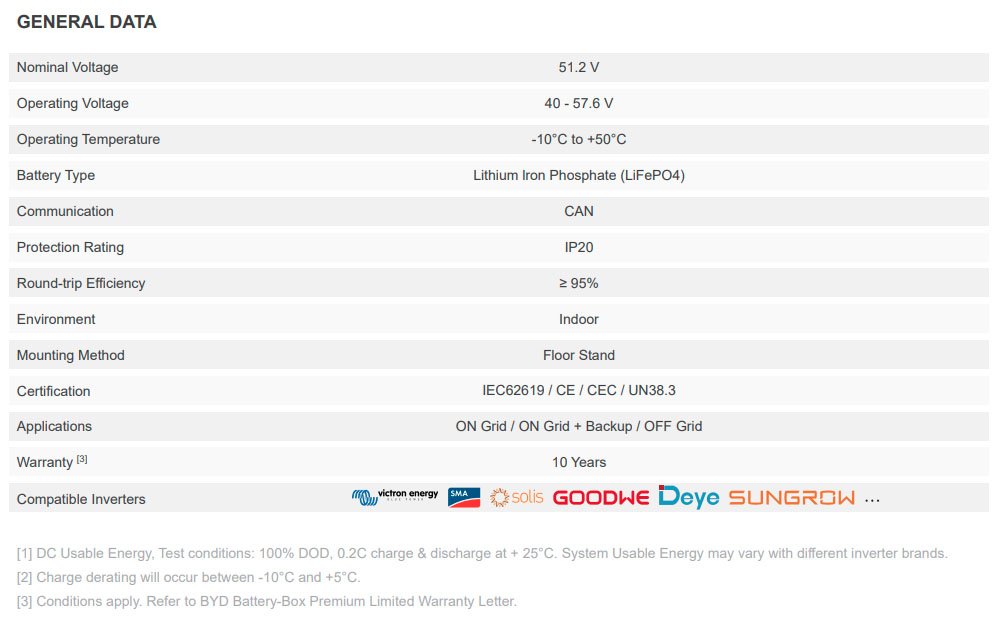
BYD LVS battery
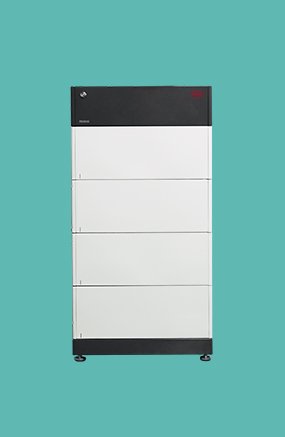
While the Battery-Box Premium LVL model is made up of the BCU and the storage module, the LVS model has the three components of the HVS and HVM: the base, the modules and the BCU (battery control unit). This allows the number of modules installed in a tower to be increased. Each module has a capacity of 4 kWh. And in each tower we can stack up to a total of 6 modules, reaching a useful capacity of 24 kWh.
KEY INFO
The difference with the HV models is that the modules in each tower are not connected in series (adding voltage) but in parallel (adding current).
Like the previous models, its flexibility and scalability allow up to 16 towers to be connected in parallel to reach 256 kWh. When you connect towers in parallel, the maximum number of modules per tower is reduced from 6 to 4.
Unlike the HV models, the LVS can work with towers with different modules, since they all work with 48v regardless of the number of modules they have when connected in parallel. However, the manufacturer recommends connecting towers with more or less the same number of modules in parallel. For example, if you have to install five modules and each tower only supports four, it is better to make a tower with two and another with three than one with four and another with one. The reason: greater system efficiency, that is, that it works better.
The basic technical characteristics of the LVS model are:
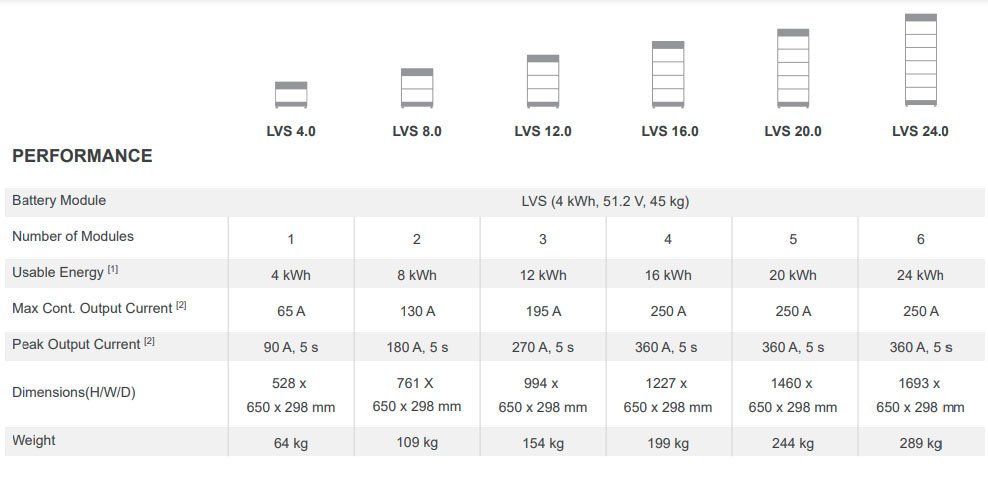
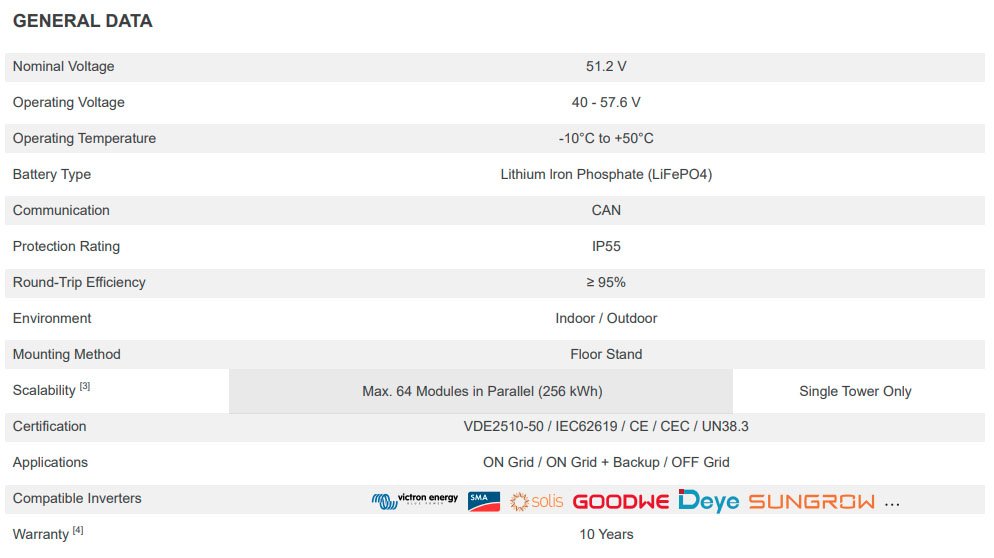
Compatibility with BYD battery inverters
As we have told you on other occasions, not all batteries work with all inverters. This is very important if you do not want to buy a battery that does not work with your inverter.
In the case of BYD, they can work with different models. Depending on the voltage of the inverter and the storage capacity you need, your BYD option will be one or the other. Being aware of this, BYD has developed a series of compatibility tables with different manufacturers, which you can consult on its website.
KEY INFO
Remember to check compatibility with your inverter before buying the battery.
Download a list of compatible inverters for each battery model from the following links
HVS & HVM Compatible Inverter List
Advantages of BYD batteries
The advantages of BYD Premium high and low-voltage batteries can be summarized in the following aspects:
Pros
Advantages explained
- Adaptability: You can adopt these batteries to different types of installations, whether self-consumption (connected to the grid) or isolated. They also adapt very well to both home and business photovoltaic installations.
- Scalability: Thanks to its wide range of storage capacity and the possibility of parallel connection, you can adopt your storage system to the different energy needs you may have (from 3.8 kWh to 983 kWh). And, as we have seen, you can expand this capacity when you require it.
- Less space requirement: The modular format of the HVS, HVM and LVS models allows you to stack different modules in the same tower. So, this reduces the space required for the storage installation.
- Emergency system: In the case of grid-connected installations, they have a high-power emergency or backup system that will allow you to continue having power when the grid falls.
- Greater efficiency: HV batteries achieve a maximum efficiency of 96% thanks to a real high-voltage series connection.
- Flexibility and simplicity: The patented modular plug design does not require internal wiring and allows maximum flexibility and ease of use. Likewise, the modular design simplifies both the transport and the installation of the batteries.
- More safety, power and useful life: thanks to working with Lithium Iron Phosphate (LFP) and not with cobalt, these batteries get maximum safety, longer useful life and more power.
- Compatibility: As we have seen, it is compatible with the main inverter manufacturers. In the case of HV models, this advantage is offered to single-phase and three-phase inverters.
What do these battery models offer compared to previous BYD versions?
The benefits that the BYD Box Premium offers over previous models have to do with the advantages we have just mentioned, such as:
- It is cobalt-free, in the commitment to Lithium Iron Phosphate.
- Greater scalability, going from 32 systems in parallel to 64 in the case of LVL. So, they have a greater storage capacity, going in the same example from 441.6 kWh to 983 kWh.
- The possibility of stacking battery modules in a tower.
- It incorporates an LED indicator of the battery status.
- All models have the possibility of direct connection to the Internet, facilitating remote control and service.
- Greater simplicity in installation with a simplified assembly mechanism, with a specific area dedicated to wiring (BCU).
- Modules with higher energy density. This means a lower weight per kWh. In other words, you need less space to store the same amount of energy.
- Better technical capabilities: VDE2510 safety certification; improved SOC reading; better performance at low temperatures.
Conclusion
BYD has undoubtedly become one of the main manufacturers of lithium batteries for photovoltaics. To sum up, this reliable company offers top-quality, flexible solutions for your energy needs.



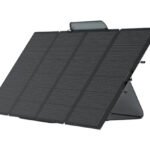
Leave a Reply